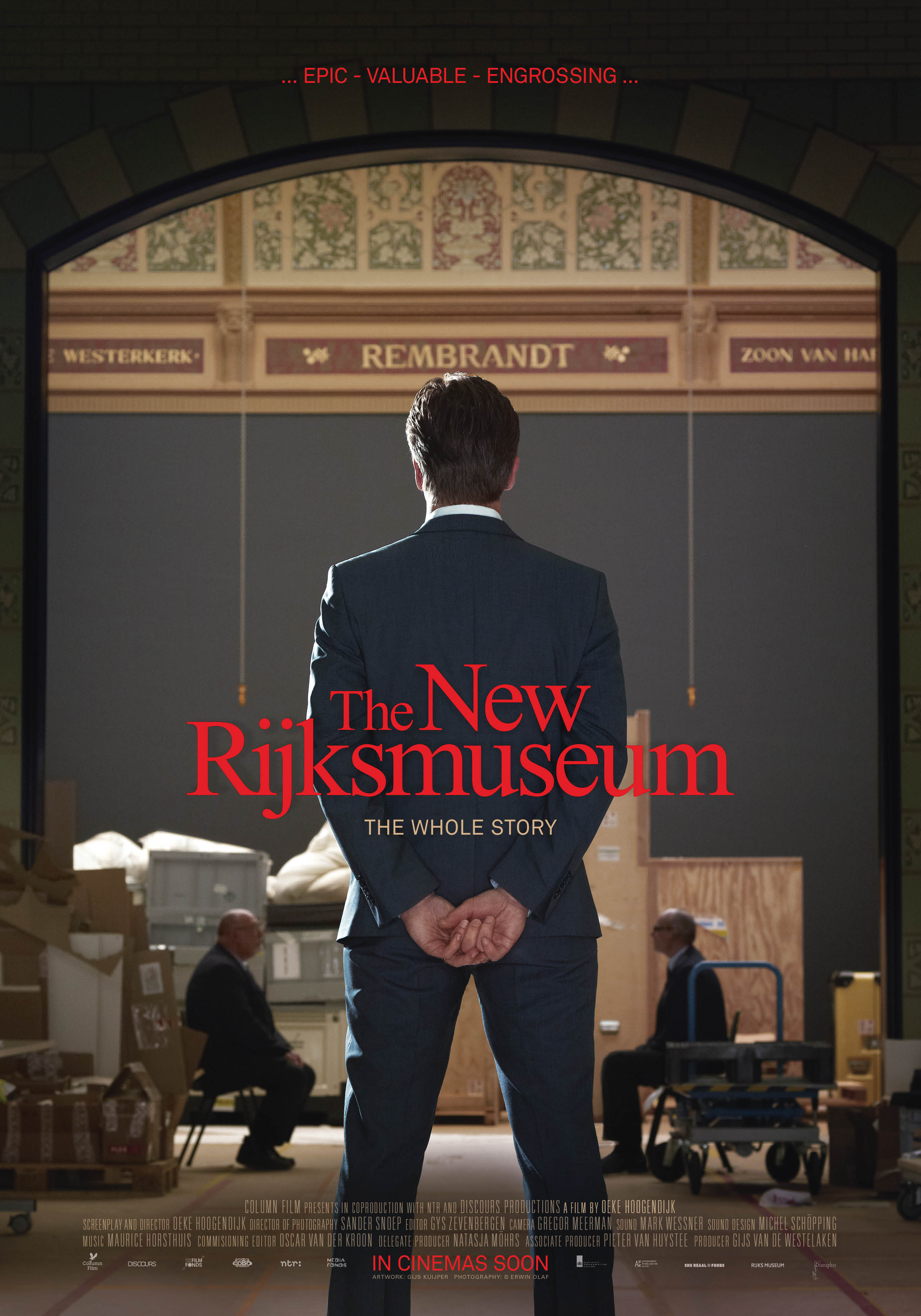
Nederlandse pers over Het Nieuwe Rijksmuseum / Dutch press quotes on The New Rijksmuseum
Scroll down for English press quotes
“Een monumentale serie, met een observerende stijl en tragikomische verteltrant, vooral door de sublieme montage”
(NRC Handelsblad, Hans Beerekamp)
“ Een Shakespeareiaanse soap”
(NRC Handelsblad, Sandra Smallenburg)
“In de Eregalerij van de publiciteit rond het Rijksmuseum kunnen we nu op eenzame hoogte het vierluik hangen van Oeke Hoogendijk (…) een topstuk.”
(Volkskrant, Jean-Pierre Geelen)
“Het Nieuwe Rjksmuseum” begon in mineur en eindigt in majeur met een schitterend slottoneel”
(Vrij Nederland, Jhim Lamoree)
“ Eén van de bijvangsten van het eindeloze verbouwingsdrama van het Rijksmuseum is de, nu al, klassieke documentairereeks Het Nieuwe Rijksmuseum (…)mag in de Eregalerij.”
(Parool, Han Lips)
‘Een kafkaiaanse tragikomedie in vier bedrijven’.
(Trouw, Willem Pekelder)
“Hoogendijk slaagt er voortdurend in om achter het grote verhaal van een hels complexe renovatie de juiste personages op te voeren. Het Nieuwe Rijksmuseum is kortom een meesterwerk, dat deze jury met blinde bewondering bijzet in de Eregalerij.
(Uit Juryrapport Zilveren Nipkowschijf, 2013)
“Uithoudingsvermogen en loyaliteit aan je onderwerp zijn, hoe lovenswaardig ook, niet alles: hier is hogeschoolwerk geleverd door het hele team.” (Uit Juryrapport Gouden Kalf, 2013)
Buitenlandse pers over Het Nieuwe Rijksmuseum / Press quotes on The New Rijksmuseum
Until April of this year, the Rijksmuseum in Amsterdam, a peer of the Louvre, the Prado and the Hermitage, was mostly closed for almost a decade, thanks to an extensive, expensive and frequently controversial renovation. That hiatus, during which some of the finest Rembrandts, Vermeers and other masterpieces of Dutch art vanished from public view, would most likely be forgotten if not for “The New Rijksmuseum,” Oeke Hoogendijk’s eye-opening, patience-testing new documentary.
(The New York Times)
A grueling film that would make useful viewing for anyone contemplating change at a major institution and all those inclined to carp from the sidelines when such changes take longer than expected, Oeke Hoogendijk’s The New Rijksmuseum is an epic, four-hour account of renovations to Amsterdam’s famous art museum. The two-part film is far too tortured for a general audience, but art lovers will find it edifying; moviegoers with a foot in the architecture or construction fields may find it worthwhile too, if only so they can rejoice that they’re not the ones enduring this gig.
(The Wall Street Journal)
Here’s a documentary undertaking that seems as daunting as the complicated institutional art story it tells. Split into two parts, with a total running time of nearly four hours, the film recounts the fractious, decade-long effort to renovate Amsterdam’s Rijksmuseum, built by Pierre Cuypers in 1895. There’s a happy ending: The museum reopened in April. Getting there, though, was something else, as the project generated conflict in every direction. Director Oeke Hoogendijk dug in for the long haul.
(The Wall Street Journal)
Those eager to see more of the art may be disappointed to find a documentary that pays more attention to cracks in the walls than the work itself, though the film offers a rare glimpse at the process of selecting and restoring those paintings that will eventually go on display. While it may seem banal to most, this curatorial cull reveals the powerful aesthetic-shaping influence of museums (few visitors ever think to ask who chooses what they see, or why). By focusing on such details, Hoogendijk has created an artifact that, while not exactly elegant, 400 years hence may prove as vital a window into Amsterdam culture as any of the Dutch masterpieces hanging in the museum itself.
(Variety)


